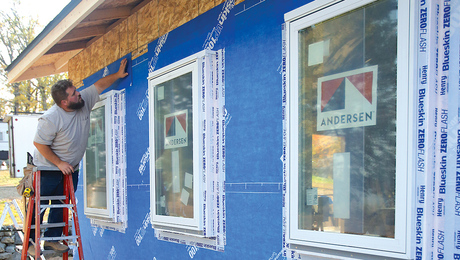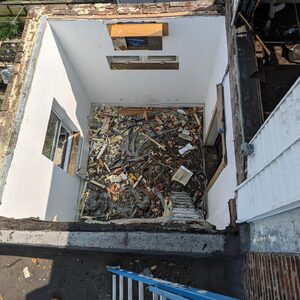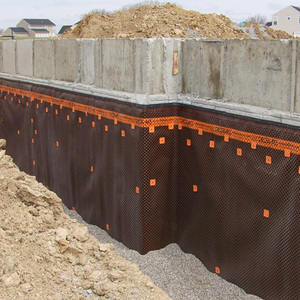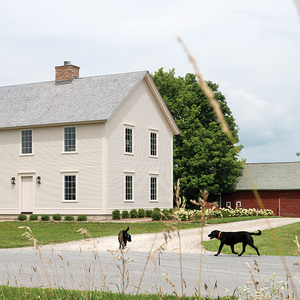I’m adding new wiring for phone and ethernet. Is there any rules for running multiple CAT 6 cabling next to each other within a stud bay? The stuff is shielded so shouldn’t it be okay to run next to each other using same staple? Any advice is appreciated.
Thanks



















Replies
No problem running multiple Cat-6 (or Cat-3/4/5) cables next to each other, even in a tight bundle -- it's done all the time. You do want to avoid long (more than a foot or two) parallel runs of Cat-whatever and regular power wiring, and keep the Cat-whatever at least a few inches from any fluorescent ballast or other electromagnet-like thingie.
Ok, thanks for the reply
I was basically just repeating "standard industry recommendations". Standard Cat-4 and upward is exceedingly well-designed to reject noise and I've experimented (though not in any sort of rigorous test) with attempting to inject house wiring noise into the cable, without ever noticing a problem.
As to the details of how/why you could have a problem, the main threat would be common-mode noise that overloaded the receivers. This would take a relatively high level of noise (eg, injected due to close contact with a "leaky" transformer, motor, or ballast, or a long run closely parallel to current-carrying AC wiring).
But the thing is you can go from having zero problems to having a "hard error" situation on a cable with just a slight increase in noise level, so you never really know how close you're cutting things. A few simple precautions can reduce the chance of trouble by an order of magnitude, so why not take those precautions?
>>>The stuff is shielded so
>>>The stuff is shielded so shouldn't it be okay to run next to each other using same staple? Any advice is appreciated.
Actually, the stuff is unshielded. For decades the various ethernet cabling standards (after the coax days) have been referred to as "UTP", Unshielded Twisted Pair. The cable relies on the twisting of pairs of copper wires to resist crosstalk and interferance from external sources.
What transmission rate do you expect to achieve? If it's only 10 or maybe 100 megabit then you'll probably be OK. If you expect to get megabit throughput I'd be much more careful. The workmanship standards for megabit certified cabling are pretty strict, with details about bend radius, fastener compression, and untwisting at terminations.
USUALLY it is unshielded. Pesonally, I only use cat 6 shielded as I'm running it thorugh bundle of power cabled behind TVs and through attic chases.
Shielding makes little difference in common-mode noise pickup.